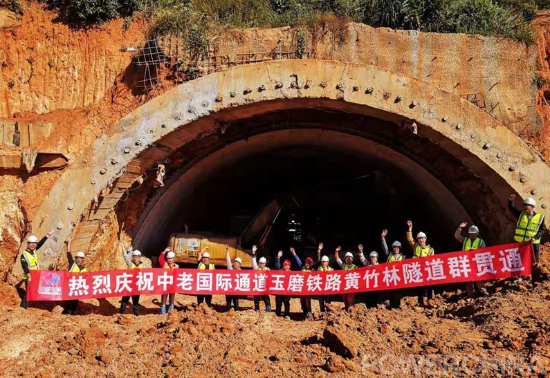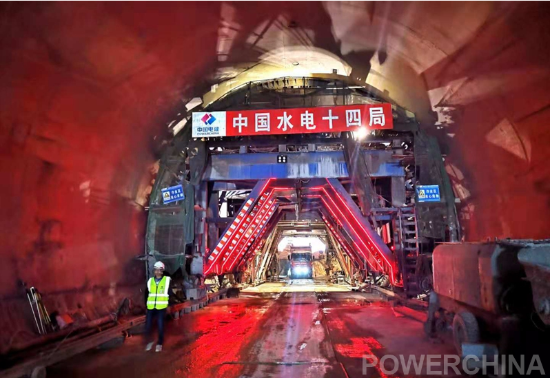
The Huangzhulin tunnels on the China-Laos railway were completed on Nov 30.
 |
|
Workers celebrate the completion of the Huangzhulin tunnels along the China-Laos railway on Nov 30. [Photo/POWERCHINA] |
This is the first section of tunnels to be completed on the railway's China section, which is 508 kilometers long.
The domestic section of the railway connects Yunnan's Yuxi in the north with Mohan Port on the China-Laos border in the south.
The domestic section, which connects to the currently under-construction Laos section, is a national I-class electrified railway that supports a maximum speed of 160 km/h.
The railway is an important part of the Belt and Road Initiative as it helps connect China with neighboring countries.
The Huangzhulin tunnels were constructed by Sinohydro Bureau 14 Co, a subsidiary of POWERCHINA.
This section of tunnels consists of three separate but interconnected tunnels. Each tunnel crosses through a mountain. The three tunnels are located on a curve with a radius of 2,800 meters and a maximum depth of 50 meters.
Since construction on the tunnels began in September 2016, Sinohydro Bureau 14 Co has had to contend with geological difficulties and strict environmental protection requirements, but was able to successfully complete them as planned.
"The tunnels pass through Xishuangbanna Wild Elephant Valley and 10,000-mu of tea gardens. During the construction process, we adopted dust and noise reduction measures to minimize the impact on the local environment," said Zheng Xiancan, manager of the Yumo Railway Project Department.
 |
|
The inside of a completed Huangzhulin tunnel on Nov 30. [Photo/POWERCHINA] |
"In particular, Asian elephants can occasionally be seen in this section. In order to reduce pressure on Asian elephants, we built a 6-kilometer fence for them. Later, we will build more than 30 kilometers of protective fences," he added.
Parties involved in the construction of the China-Laos railway are currently taking advantage of the dry season, which is considered the best time to build.
They are increasing investment in resources such as manpower, equipment and materials and are actively carrying out labor competitions to push ahead with the construction of the railway.